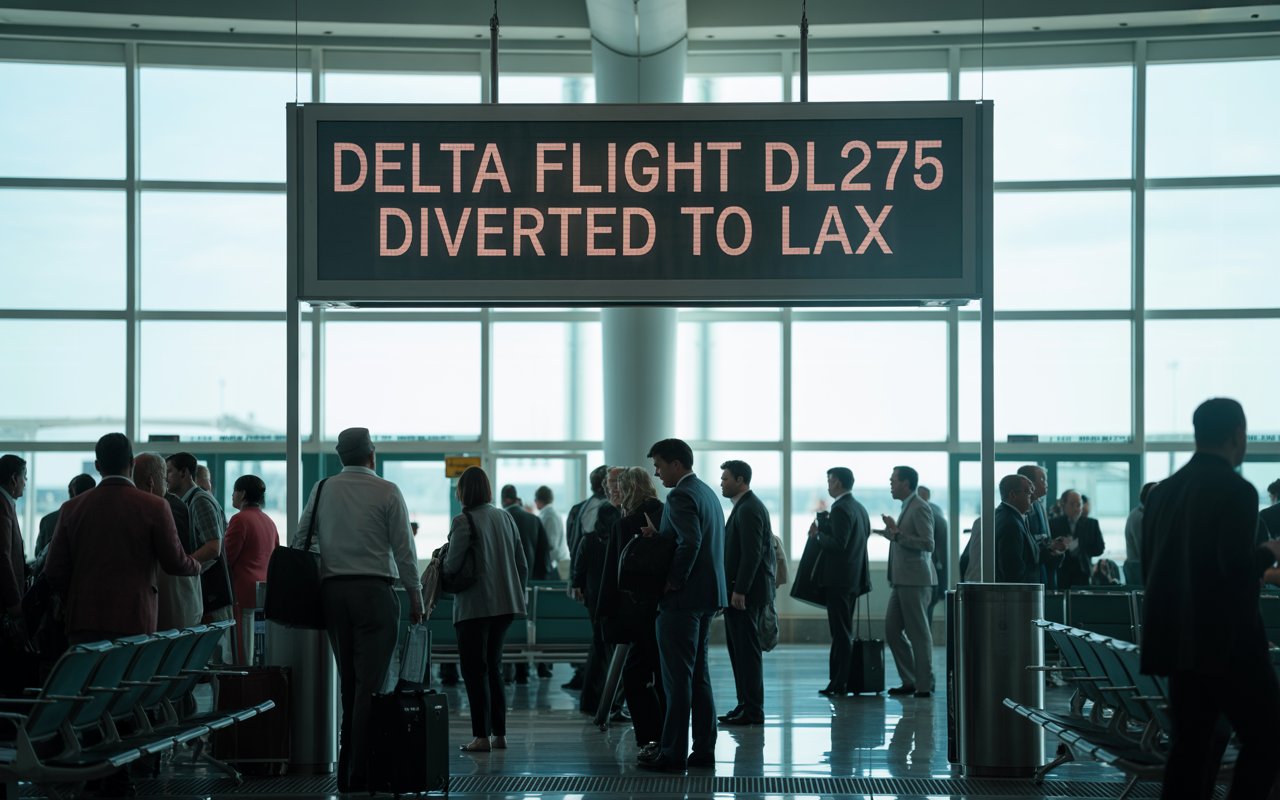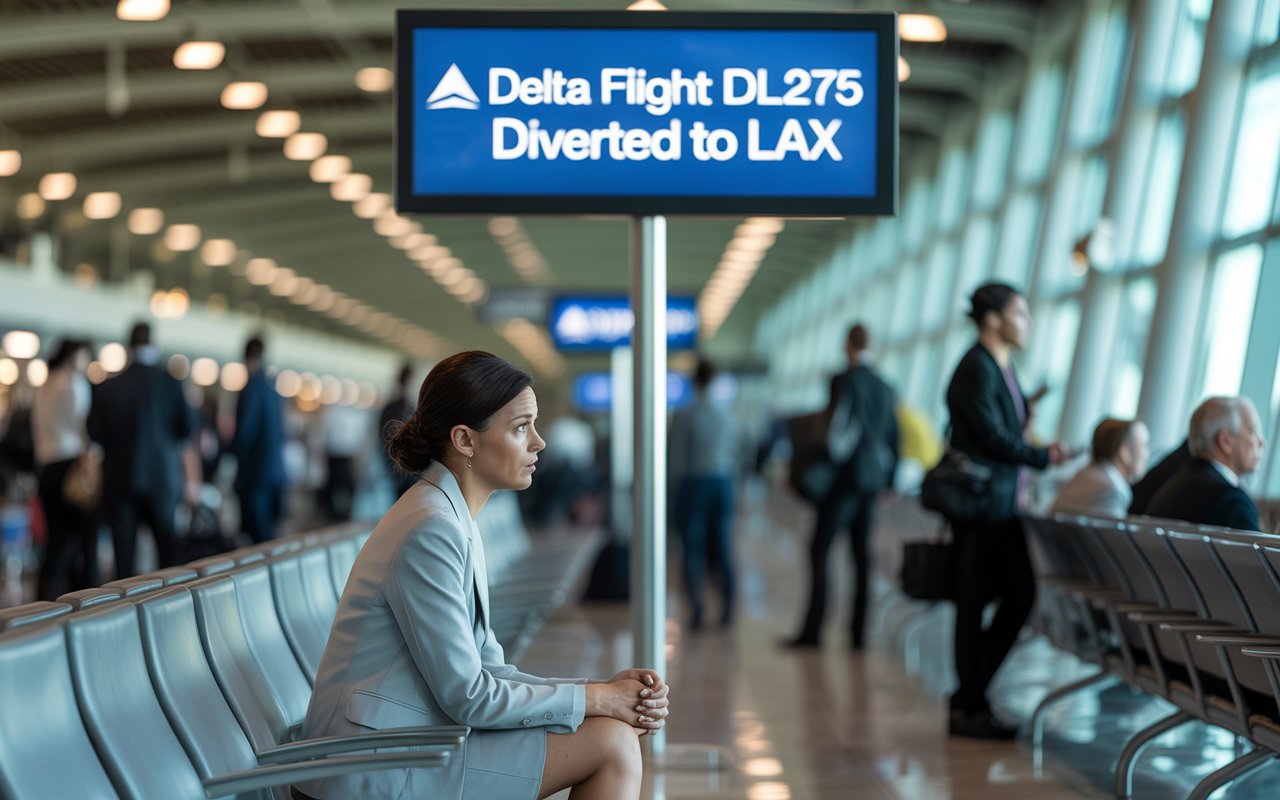On May 28, 2025, Delta Flight DL275 Diverted to LAX, en route from Detroit Metropolitan Wayne County Airport (DTW) to Tokyo Haneda (HND), faced an unexpected challenge mid‑air. An issue with its Rolls‑Royce Trent XWB engine’s anti‑ice system forced a diversion to Los Angeles International Airport (LAX)—raising safety, technical, and operational questions across the aviation community. Read on to learn what unfolded, why LAX was chosen, how passengers were impacted, and what this means for the future of flight safety.
1. Flight Overview & Incident Description
-
Route: Detroit → Tokyo
-
Aircraft: Airbus A350‑900 (Reg. N508DN)
-
Incident: During cruise over the North Pacific Ocean, approximately 620 nautical miles southwest of Anchorage, pilots detected a failure in the engine anti‑ice system.
Rather than continuing to Tokyo or returning to Detroit, the crew decided to divert to LAX, a well-equipped Delta hub with maintenance capabilities. The aircraft landed safely on Runway 06R, with no injuries reported.
2. Why LAX Was the Smart Diversion Choice
Several strategic factors made LAX the optimal diversion airport:
-
Maintenance Infrastructure: LAX supports Airbus A350 maintenance and has a 24/7 Rolls‑Royce engine support team and parts inventory.
-
Passenger Convenience: Numerous daily flights to Tokyo from LAX made rebooking smoother.
-
Operational Readiness: As a major hub, LAX offered long runways, favorable weather, and emergency services—critical for landing a long‑haul aircraft with its full fuel load.
3. Timeline & Duration
-
Takeoff Delay: Flight DL275 departed around 3:53 PM local time from DTW on May 27, 2025.
-
In‑Flight Alert: Mid‑Pacific, the anti‑ice system malfunctioned.
-
Diversion & Landing: The plane landed safely at LAX around 12:08 AM on May 28—marking a flight duration of approximately 12 hours and 15 minutes.
4. Passenger Experience & Delta’s Response

-
Safety First: All passengers and crew disembarked safely—no injuries reported.
-
Swift Rebooking: Delta immediately rebooked travelers onto alternative flights and provided accommodations, meal vouchers, and SkyMiles as goodwill where applicable.
-
Operational Efficiency: The A350 remained at LAX for about 18.5 hours while maintenance teams conducted complete inspections and repairs.
5. Financial & Industry Impact
-
Cost of Diversion: The incident alone is estimated to have cost around $2.3 million US—accounting for fuel, maintenance, rerouting, and passenger care.
-
Typical Diversion Costs: Unscheduled diversions generally cost between $10,000 and $200,000, though complex transpacific diversions like this can far exceed that range.
6. Prevention: The Role of Predictive Technology
Modern flight safety increasingly relies on AI‑powered predictive maintenance. Experts estimate technology like this could have detected the anti‑ice system’s deterioration 3 to 6 hours before takeoff, potentially preventing the diversion altogether.
Investing in such tools helps airlines reduce diversions, improve operational reliability, and save millions—while strengthening safety protocols.
7. What Travelers Should Know
-
Stay Prepared: Keep essentials—medicines, chargers, documents—in your carry‑on.
-
Use Airline Apps: Apps like Fly Delta now offer in‑flight updates and even pre‑landing rebooking options.Cordless.io
-
Know Your Rights: Though U.S. law doesn’t mandate compensation for diversions, Delta often offers goodwill gestures like travel credits or miles.
Conclusion
The DL275 diversion to LAX on May 28, 2025 stands as a prime example of the aviation industry’s layered safety measures—from skilled crews to robust infrastructure. While aircraft like the Airbus A350 are marvels of modern engineering, incidents like these demonstrate the continued importance of evolving safety systems.
With growing adoption of AI-driven monitoring and predictive maintenance, the future of air travel looks not just safer—but smarter.
FAQs (Optimized for SEO)
| Question | Answer |
|---|---|
| Why was Delta Flight DL275 diverted to LAX? | Due to an engine anti‑ice system failure during cruise over the Pacific, the crew diverted to LAX—a hub with maintenance capabilities—for safety.Travel And Tour WorldThe Current |
| When did the flight divert and how long was the flight? | DL275 diverted mid‑flight and landed at LAX around 1:08 AM local time on May 28, 2025, after about 12 hours and 15 minutes airborne.The CurrentTravel And Tour World |
| Were there any injuries during the diversion? | No injuries were reported. All passengers and crew disembarked safely, and Delta facilitated rebooking and accommodations.Travel And Tour World The Mindful Mirror |
| How much did the diversion cost? | Estimated cost to Delta was around $2.3 million, covering fuel, maintenance, rerouting, and passenger care.The CurrentThe Consumers Feedback |
| Could the diversion have been prevented? | Yes. AI-powered predictive maintenance systems could have likely detected the failure before takeoff—reducing risk and operational cost.The CurrentCoruzant Technologies |

